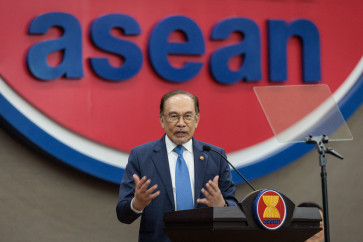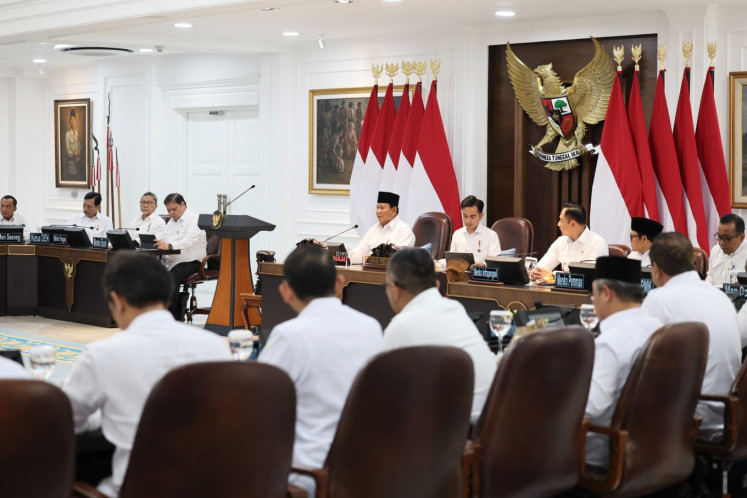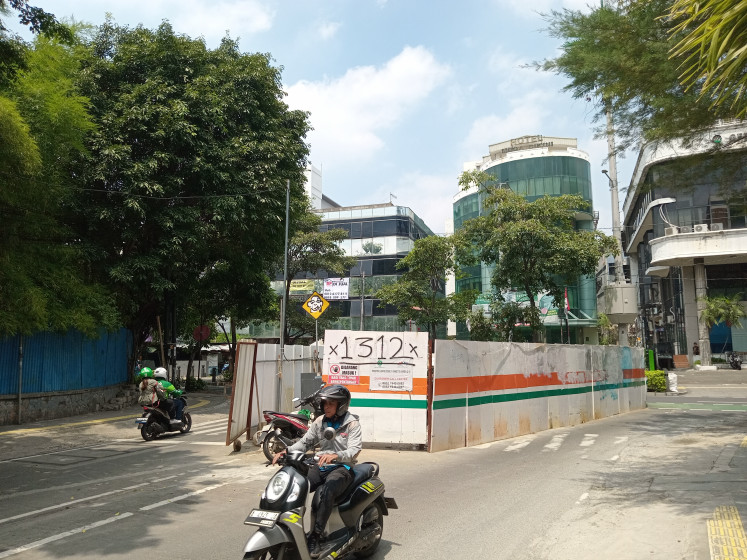Popular Reads
Top Results
Can't find what you're looking for?
View all search resultsPopular Reads
Top Results
Can't find what you're looking for?
View all search resultsRI lags behind in renewable energy investment, pledges
Four years on from the historic Paris climate conference, Indonesia is still struggling to raise investment to develop renewable energy
Change text size
Gift Premium Articles
to Anyone
F
our years on from the historic Paris climate conference, Indonesia is still struggling to raise investment to develop renewable energy. Experts say the blame lies partly with government regulations, which stunt the development of renewable energy in Indonesia.
Since 2017, Fabby Tumiwa, executive director of the Institute for Essential Services Reform (IESR), a Jakarta-based sustainability think tank, has observed renewable energy capital flight from Indonesia. “The regulations do not reflect the business model of renewable energy projects; the price is not so attractive; [there is] unequal risk-sharing between PLN and the developers, so [investors] all flee,” said Fabby.
On the one hand, Indonesia is likely to meet its Paris Agreement targets, but only because the goals were very unambitious to begin with. Such an effort would still be insufficient to curb climate change, according to experts from The Climate Action Tracker, an independent scientific analysis tracking climate change.
“Even with the big coal expansion planned in Indonesia for the electricity sector, even with the emissions increasing in all sectors, [Indonesia] would still overachieve [its] nationally determined contribution,” said Leonardo Nascimento, a climate policy analyst at the NewClimate Institute, a climate change NGO.
The more relevant and ambitious target is Indonesia’s goal of generating 23 percent of its energy from renewable sources by 2025. Last year, the number stood at just over 8 percent, according to data from state-owned electricity company PLN, with hydropower contributing the most, followed by geothermal energy.
But renewable energy development in Indonesia remains sluggish, and the government shows no sign of curbing the expansion of coal, with plans to build more coal-fired power plants under President Joko “Jokowi’ Widodo’s signature 35,000 megawatt electricity program.
Investment in the renewable energy sector was only US$1.6 billion in 2018, the Energy and Mineral Resources Ministry announced earlier this year. That is only 10 to 15 percent of the level of investment needed if Indonesia wants to meet its 23 percent target, according to Fabby.
The renewable energy sector in Indonesia is still in its infancy, and consequently, investment is seen as risky. According to Ernst & Young’s latest Renewable Energy Country Attractiveness Index, Indonesia ranks dead last out of 40 countries in investment attractiveness and opportunities in renewable energy.
“Most of these independent power developers see that the risk of doing business in renewable energy is pretty high,” said Fabby. In turn, the high risk level resulted in high interest rates on loans from banks, making it difficult for developers to finance such projects. A lack of project finance and funding for renewable projects was one of the major challenges for the Indonesian energy sector to go green, explained Fabby.
It does not help that government regulations do not alleviate but actively increase the risk of investing in renewables. For example, Government Regulation No. 12/2017 prevents geothermal energy developers from securing a power purchasing agreement (PPA) with PLN until after they have proven geothermal reserves, leaving them to carry out expensive geothermal exploration largely on their own dime.
“That’s actually the problem, because for geothermal to reach that level, you need capital. And for exploration you need to use upfront capital before you find better resources,” said Fabby.
“When you have a PPA at the end of the cycle, then the risk is too high, because no one will lend you money. And even if you find [geothermal resources], there is no guarantee of a PPA.”
According to Institute for Essential Services Reform calculations, Indonesia will need between $8 billion and $12 billion in renewable energy investment a year until 2025, starting from 2015, if it wants to meet the 23 percent target.
“We still have hope for [meeting] the 23 percent target, but [only if] the government moves very swiftly to address the price [issue] and creates greater certainty on how they will support renewable energy development. We can catch up,” said Fabby.
— The writer is an intern at The Jakarta Post.










